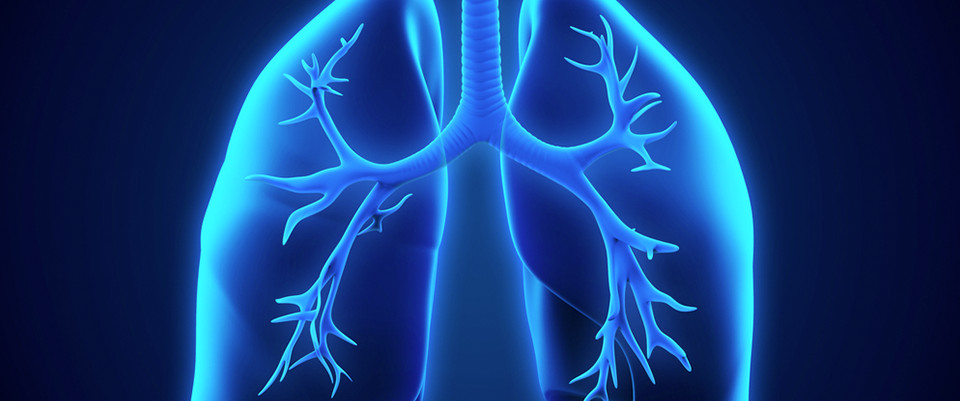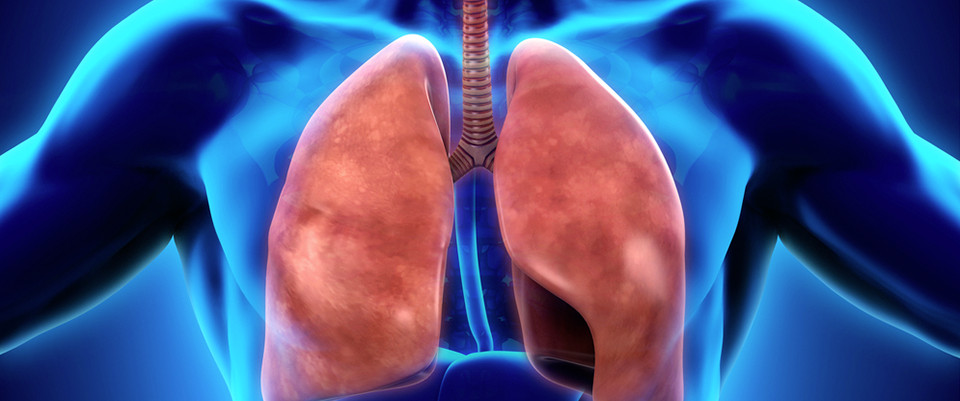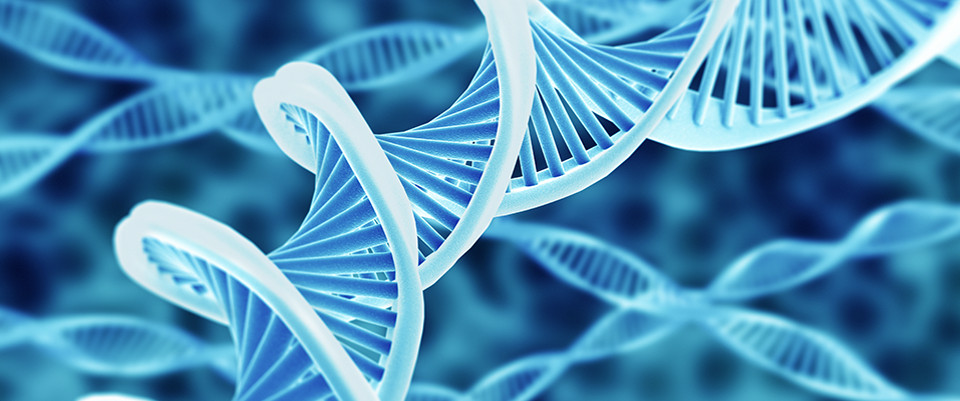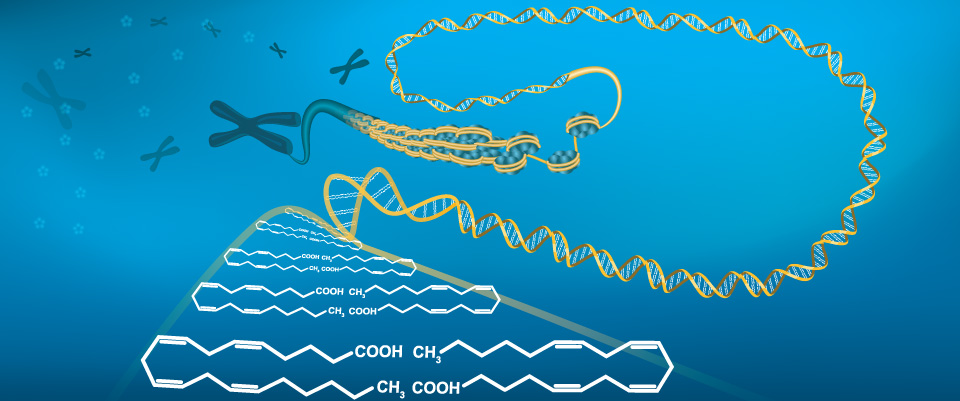PubMed
metabolomics; +37 new citations
37 new pubmed citations were retrieved for your search.
Click on the search hyperlink below to display the complete search results:
metabolomics
These pubmed results were generated on 2018/10/20PubMed comprises more than millions of citations for biomedical literature from MEDLINE, life science journals, and online books.
Citations may include links to full-text content from PubMed Central and publisher web sites.
metabolomics; +29 new citations
29 new pubmed citations were retrieved for your search.
Click on the search hyperlink below to display the complete search results:
metabolomics
These pubmed results were generated on 2018/10/19PubMed comprises more than millions of citations for biomedical literature from MEDLINE, life science journals, and online books.
Citations may include links to full-text content from PubMed Central and publisher web sites.
PRMT6 Regulates RAS/RAF Binding and MEK/ERK-Mediated Cancer Stemness Activities in Hepatocellular Carcinoma through CRAF Methylation.
PRMT6 Regulates RAS/RAF Binding and MEK/ERK-Mediated Cancer Stemness Activities in Hepatocellular Carcinoma through CRAF Methylation.
Cell Rep. 2018 Oct 16;25(3):690-701.e8
Authors: Chan LH, Zhou L, Ng KY, Wong TL, Lee TK, Sharma R, Loong JH, Ching YP, Yuan YF, Xie D, Lo CM, Man K, Artegiani B, Clevers H, Yan HH, Leung SY, Richard S, Guan XY, Huen MSY, Ma S
Abstract
Arginine methylation is a post-translational modification that plays pivotal roles in signal transduction and gene transcription during cell fate determination. We found protein methyltransferase 6 (PRMT6) to be frequently downregulated in hepatocellular carcinoma (HCC) and its expression to negatively correlate with aggressive cancer features in HCC patients. Silencing of PRMT6 promoted the tumor-initiating, metastasis, and therapy resistance potential of HCC cell lines and patient-derived organoids. Consistently, loss of PRMT6 expression aggravated liver tumorigenesis in a chemical-induced HCC PRMT6 knockout (PRMT6-/-) mouse model. Integrated transcriptome and protein-protein interaction studies revealed an enrichment of genes implicated in RAS signaling and showed that PRMT6 interacted with CRAF on arginine 100, which decreased its RAS binding potential and altered its downstream MEK/ERK signaling. Our work describes a critical repressive function for PRMT6 in maintenance of HCC cells by regulating RAS binding and MEK/ERK signaling via methylation of CRAF on arginine 100.
PMID: 30332648 [PubMed - in process]
Salt-Responsive Metabolite, β-Hydroxybutyrate, Attenuates Hypertension.
Salt-Responsive Metabolite, β-Hydroxybutyrate, Attenuates Hypertension.
Cell Rep. 2018 Oct 16;25(3):677-689.e4
Authors: Chakraborty S, Galla S, Cheng X, Yeo JY, Mell B, Singh V, Yeoh B, Saha P, Mathew AV, Vijay-Kumar M, Joe B
Abstract
Dietary salt reduction and exercise are lifestyle modifications for salt-sensitive hypertensives. While exercise has prominent metabolic effects, salt has an adverse effect on metabolic syndrome, of which hypertension is a hallmark. We hypothesized that dietary salt impacts metabolism in a salt-sensitive model of hypertension. An untargeted metabolomic approach demonstrates lower circulating levels of the ketone body, beta-hydroxybutyrate (βOHB), in high salt-fed hypertensive rats. Despite the high salt intake, specific rescue of βOHB levels by nutritional supplementation of its precursor, 1,3-butanediol, attenuates hypertension and protects kidney function. This beneficial effect of βOHB was likely independent of gut-microbiotal and Th17-mediated effects of salt and instead facilitated by βOHB inhibiting the renal Nlrp3 inflammasome. The juxtaposed effects of dietary salt and exercise on salt-sensitive hypertension, which decrease and increase βOHB respectively, indicate that nutritional supplementation of a precursor of βOHB provides a similar benefit to salt-sensitive hypertension as exercise.
PMID: 30332647 [PubMed - in process]
Sarcosine Is Uniquely Modulated by Aging and Dietary Restriction in Rodents and Humans.
Sarcosine Is Uniquely Modulated by Aging and Dietary Restriction in Rodents and Humans.
Cell Rep. 2018 Oct 16;25(3):663-676.e6
Authors: Walters RO, Arias E, Diaz A, Burgos ES, Guan F, Tiano S, Mao K, Green CL, Qiu Y, Shah H, Wang D, Hudgins AD, Tabrizian T, Tosti V, Shechter D, Fontana L, Kurland IJ, Barzilai N, Cuervo AM, Promislow DEL, Huffman DM
Abstract
A hallmark of aging is a decline in metabolic homeostasis, which is attenuated by dietary restriction (DR). However, the interaction of aging and DR with the metabolome is not well understood. We report that DR is a stronger modulator of the rat metabolome than age in plasma and tissues. A comparative metabolomic screen in rodents and humans identified circulating sarcosine as being similarly reduced with aging and increased by DR, while sarcosine is also elevated in long-lived Ames dwarf mice. Pathway analysis in aged sarcosine-replete rats identify this biogenic amine as an integral node in the metabolome network. Finally, we show that sarcosine can activate autophagy in cultured cells and enhances autophagic flux in vivo, suggesting a potential role in autophagy induction by DR. Thus, these data identify circulating sarcosine as a biomarker of aging and DR in mammalians and may contribute to age-related alterations in the metabolome and in proteostasis.
PMID: 30332646 [PubMed - in process]
GeneLab: Omics database for spaceflight experiments.
GeneLab: Omics database for spaceflight experiments.
Bioinformatics. 2018 Oct 17;:
Authors: Ray S, Gebre S, Fogle H, Berrios DC, Tran PB, Galazka JM, Costes SV
Abstract
Motivation: - To curate and organize expensive spaceflight experiments conducted aboard space stations and maximize the scientific return of investment, while democratizing access to vast amounts of spaceflight related omics data generated from several model organisms.
Results: - The GeneLab Data System (GLDS) is an open access database containing fully coordinated and curated "omics" (genomics, transcriptomics, proteomics, metabolomics) data, detailed metadata and radiation dosimetry for a variety of model organisms. GLDS is supported by an integrated data system allowing federated search across several public bioinformatics repositories. Archived datasets can be queried using full-text search (e.g., keywords, Boolean and wildcards) and results can be sorted in multifactorial manner using assistive filters. GLDS also provides a collaborative platform built on GenomeSpace for sharing files and analyses with collaborators. It currently houses 172 datasets and supports standard guidelines for submission of datasets, MIAME (for microarray), ENCODE Consortium Guidelines (for RNA-seq) and MIAPE Guidelines (for proteomics).
Availability and Implementation: - https://genelab.nasa.gov/.
PMID: 30329036 [PubMed - as supplied by publisher]
Plasma Energy-Balance Metabolites Discriminate Asymptomatic Patients with Peripheral Artery Disease.
Related Articles
Plasma Energy-Balance Metabolites Discriminate Asymptomatic Patients with Peripheral Artery Disease.
Mediators Inflamm. 2018;2018:2760272
Authors: Hernández-Aguilera A, Fernández-Arroyo S, Cabre N, Luciano-Mateo F, Baiges-Gaya G, Fibla M, Martín-Paredero V, Menendez JA, Camps J, Joven J
Abstract
Peripheral artery disease (PAD) is a common disease affecting 20-25% of population over 60 years old. Early diagnosis is difficult because symptoms only become evident in advanced stages of the disease. Inflammation, impaired metabolism, and mitochondrial dysfunction predispose to PAD, which is normally associated with other highly prevalent and related conditions, such as diabetes, dyslipidemia, and hypertension. We have measured energy-balance-associated metabolite concentrations in the plasma of PAD patients segregated by the severity of the disease and in plasma of healthy volunteers using a quantitative and targeted metabolomic approach. We found relevant associations between several metabolites (3-hydroxybutirate, aconitate, (iso)citrate, glutamate, and serine) with markers of oxidative stress and inflammation. Metabolomic profiling also revealed that (iso)citrate and glutamate are metabolites with high ability to discriminate between healthy participants and PAD patients without symptoms. Collectively, our data suggest that metabolomics provide significant information on the pathogenesis of PAD and useful biomarkers for the diagnosis and assessment of progression.
PMID: 30327580 [PubMed - in process]
Opportunities for green microextractions in comprehensive two-dimensional gas chromatography / mass spectrometry-based metabolomics - A review.
Related Articles
Opportunities for green microextractions in comprehensive two-dimensional gas chromatography / mass spectrometry-based metabolomics - A review.
Anal Chim Acta. 2018 Dec 21;1040:1-18
Authors: de Souza JRB, Dias FFG, Caliman JD, Augusto F, Hantao LW
Abstract
Microextractions have become an attractive class of techniques for metabolomics. The most popular technique is solid-phase microextraction that revolutionized the field of modern sample preparation in the early nineties. Ever since this milestone, microextractions have taken on many principles and formats comprising droplets, fibers, membranes, needles, and blades. Sampling devices may be customized to impart exhaustive or equilibrium-based characteristics to the extraction method. Equilibrium-based approaches may rely on additional methods for calibration, such as diffusion-based or on-fiber kinetic calibration to improve bioanalysis. In addition, microextraction-based methods may enable minimally invasive sampling protocols and measure the average free concentration of analytes in heterogeneous multiphasic biological systems. On-fiber derivatization has evidenced new opportunities for targeted and untargeted analysis in metabolomics. All these advantages have highlighted the potential of microextraction techniques for in vivo and on-site sampling and sample preparation, while many opportunities are still available for laboratory protocols. In this review, we outline and discuss some of the most recent applications using microextractions techniques for comprehensive two-dimensional gas chromatography-based metabolomics, including potential research opportunities.
PMID: 30327098 [PubMed - in process]
Supplementation of a clay mineral-based product modulates plasma metabolomic profile and liver enzymes in cattle fed grain-rich diets.
Related Articles
Supplementation of a clay mineral-based product modulates plasma metabolomic profile and liver enzymes in cattle fed grain-rich diets.
Animal. 2018 Oct 17;:1-10
Authors: Humer E, Kröger I, Neubauer V, Reisinger N, Zebeli Q
Abstract
Grain-rich diets often lead to subacute ruminal acidosis (SARA) impairing rumen and systemic cattle health. Recent data suggest beneficial effects of a clay mineral (CM)- based product on the rumen microbiome of cattle during SARA. This study sought to investigate whether the CM supplementation can counteract SARA-induced perturbations of the bovine systemic health. The study used an intermittent diet-induced SARA-model with eight dry Holstein cows receiving either no additive as control or CM via concentrates (n=8 per treatment). Cows received first a forage diet (Baseline) for 1 week, followed by a 1-week SARA-challenge (SARA 1), a 1-week recovery phase (Recovery) and finally a second SARA-challenge for 2 weeks (SARA 2). Cows were monitored for feed intake, reticular pH and chewing behavior. Blood samples were taken and analyzed for metabolites related to glucose and lipid metabolism as well as liver health biomarkers. In addition, a targeted electrospray ionization-liquid chromatography-MS-based metabolomics approach was carried out on the plasma samples obtained at the end of the Baseline and SARA 1 phase. Data showed that supplementing the cows' diet with CM improved ruminating chews per regurgitated bolus by 16% in SARA 1 (P=0.01) and enhanced the dry matter intake during the Recovery phase (P=0.05). Moreover, the SARA-induced decreases in several amino acids and phosphatidylcholines were less pronounced in cows receiving CM (P≤0.10). The CM-supplemented cows also had lower concentrations of lactate (P=0.03) and biogenic amines such as histamine and spermine (P<0.01) in the blood. In contrast, the concentration of acylcarnitines with key metabolic functions was increased in the blood of treated cows (P≤0.05). In SARA 2, the CM-cows had lower concentrations of the liver enzymes aspartate aminotransferase and γ-glutamyltransferase (P<0.05). In conclusion, the data suggest that supplementation of CM holds the potential to alleviate the negative effects of high-grain feeding in cattle by counteracting multiple SARA-induced perturbations in the systemic metabolism and liver health.
PMID: 30326981 [PubMed - as supplied by publisher]
Identification of redox imbalance as a prominent metabolic response elicited by rapeseed feeding in swine metabolome.
Related Articles
Identification of redox imbalance as a prominent metabolic response elicited by rapeseed feeding in swine metabolome.
J Anim Sci. 2018 May 04;96(5):1757-1768
Authors: Chen C, Pérez de Nanclares M, Kurtz JF, Trudeau MP, Wang L, Yao D, Saqui-Salces M, Urriola PE, Mydland LT, Shurson GC, Overland M
Abstract
Rapeseed (RS) is an abundant and inexpensive source of energy and AA in diets for monogastrics and a sustainable alternative to soybean meal. It also contains diverse bioactive phytochemicals that could have antinutritional effects at high dose. When the RS-derived feed ingredients (RSF) are used in swine diets, the uptake of these nutrients and phytochemicals is expected to affect the metabolic system. In this study, 2 groups of young pigs (17.8 ± 2.7 kg initial BW) were equally fed a soybean meal-based control diet and an RSF-based diet, respectively, for 3 wk. Digesta, liver, and serum samples from these pigs were examined by liquid chromatography-mass spectrometry-based metabolomic analysis to determine the metabolic effects of the 2 diets. Analyses of digesta samples revealed that sinapine, sinapic acid, and gluconapin were robust exposure markers of RS. The distribution of free AA along the intestine of RSF pigs was consistent with the reduced apparent ileal digestibility of AA observed in these pigs. Despite its higher fiber content, the RSF diet did not affect microbial metabolites in the digesta, including short-chain fatty acids and secondary bile acids. Analyses of the liver and serum samples revealed that RSF altered the levels of AA metabolites involved in the urea cycle and 1-carbon metabolism. More importantly, RSF increased the levels of multiple oxidized metabolites and aldehydes while decreased the levels of ascorbic acid and docosahexaenoic acid-containing lipids in the liver and serum, suggesting that RSF could disrupt redox balance in young pigs. Overall, the results indicated that RSF elicited diverse metabolic events in young pigs through its influences on nutrient and antioxidant metabolism, which might affect the performance and health in long-term feeding and also provide the venues for nutritional and processing interventions to improve the utilization of RSF in pigs.
PMID: 29518202 [PubMed - indexed for MEDLINE]
An experimental study on investigating the postmortem interval in dichlorvos poisoned rats by GC/MS-based metabolomics.
An experimental study on investigating the postmortem interval in dichlorvos poisoned rats by GC/MS-based metabolomics.
Leg Med (Tokyo). 2018 Oct 11;36:28-36
Authors: Dai X, Fan F, Ye Y, Lu X, Chen F, Wu Z, Liao L
Abstract
The estimation of the postmortem interval (PMI) is always a key issue in forensic science. Although many attempts based on metabolomics approaches have been proven to be feasible and accurate for PMI estimation, there have been no reports regarding the determination of the PMI in acute dichlorvos (DDVP) poisoning. In this study, all rats were killed by acute DDVP poisoning at a dose three fold the oral LD50 (240 mg/kg). Gas chromatography-mass spectrometry (GC/MS) was applied to investigate the metabolic profiling of blood samples at various times after death up to 72 h. A total of 39 metabolites were found to be associated with PMI, and the combinations of various numbers of metabolites were used to establish support vector regression (SVR) models to investigate the PMI. The SVR model constructed by 23 metabolites had a minimum mean squared error (MSE) of 5.49 h for the training set. Then, the SVR model was validated by prediction set with an MSE of 10.33 h, suggesting good predictive ability of the model for investigating the PMI. The findings demonstrated the great potential of GC/MS-based metabolomics combined with the SVR model in determining the PMI of DDVP poisoned rats and provided an experimental basis for the application of this approach in investigating the PMI of other toxicants.
PMID: 30326392 [PubMed - as supplied by publisher]
The Carnitine Shuttle Pathway is Altered in Patients With Neovascular Age-Related Macular Degeneration.
The Carnitine Shuttle Pathway is Altered in Patients With Neovascular Age-Related Macular Degeneration.
Invest Ophthalmol Vis Sci. 2018 Oct 01;59(12):4978-4985
Authors: Mitchell SL, Uppal K, Williamson SM, Liu K, Burgess LG, Tran V, Umfress AC, Jarrell KL, Cooke Bailey JN, Agarwal A, Pericak-Vance M, Haines JL, Scott WK, Jones DP, Brantley MA
Abstract
Purpose: To identify metabolites and metabolic pathways altered in neovascular age-related macular degeneration (NVAMD).
Methods: We performed metabolomics analysis using high-resolution C18 liquid chromatography-mass spectrometry on plasma samples from 100 NVAMD patients and 192 controls. Data for mass/charge ratio ranging from 85 to 850 were captured, and metabolic features were extracted using xMSanalyzer. Nested feature selection was used to identify metabolites that discriminated between NVAMD patients and controls. Pathway analysis was performed with Mummichog 2.0. Hierarchical clustering was used to examine the relationship between the discriminating metabolites and NVAMD patients and controls.
Results: Of the 10,917 metabolic features analyzed, a set of 159 was identified that distinguished NVAMD patients from controls (area under the curve of 0.83). Of these features, 39 were annotated with confidence and included multiple carnitine metabolites. Pathway analysis revealed that the carnitine shuttle pathway was significantly altered in NVAMD patients (P = 0.0001). Tandem mass spectrometry confirmed the molecular identity of five carnitine shuttle pathway acylcarnitine intermediates that were increased in NVAMD patients. Hierarchical cluster analysis revealed that 51% of the NVAMD patients had similar metabolic profiles, whereas the remaining 49% displayed greater variability in their metabolic profiles.
Conclusions: Multiple long-chain acylcarnitines that are part of the carnitine shuttle pathway were significantly increased in NVAMD patients compared to controls, suggesting that fatty acid metabolism may be involved in NVAMD pathophysiology. Cluster analysis suggested that clinically indistinguishable NVAMD patients can be separated into distinct subgroups based on metabolic profiles.
PMID: 30326066 [PubMed - in process]
METABOLOMIC PROFILING OF ZEBRAFISH (DANIO RERIO) EMBRYOS EXPOSED TO THE ANTIBACTERIAL AGENT TRICLOSAN.
METABOLOMIC PROFILING OF ZEBRAFISH (DANIO RERIO) EMBRYOS EXPOSED TO THE ANTIBACTERIAL AGENT TRICLOSAN.
Environ Toxicol Chem. 2018 Oct 16;:
Authors: Fu J, Gong Z, Kelly BC
Abstract
Triclosan (TCS), a widely used antibacterial and antifungal agent, is ubiquitously detected in the natural environment. There is increasing evidence TCS can produce cytotoxic, genotoxic, and endocrine disruptor effects in aquatic biota, including algae, crustaceans, and fish. Metabolomics can provide important information regarding molecular-level effects and toxicity of xenobiotic chemicals in aquatic organisms. The aim of the present study was to assess the toxicity of TCS in developing zebrafish (Danio rerio) embryos using gas chromatography-mass spectrometry (GC-MS) based metabolomics. The studied embryos were exposed to a wide range of TCS concentrations (from 10 ng/L to 500 µg/L). Endogenous metabolites were extracted using acetonitrile: isopropanol: water (3:3:2, v/v/v). Derivatization of metabolites was performed prior to identification and quantification via GC-MS analysis. A total of twenty-nine metabolites were positively identified in embryos. Univariate (One-way ANOVA) and multivariate (PCA, PLS-DA) analyses were employed to determine metabolic profile changes in TCS exposed embryos. Eight metabolites showed significant differences (p < 0.05) in embryos exposed to TCS. Significantly altered metabolites included urea, citric acid, D(+)galactose, D-glucose, stearic acid, L-proline, phenylalanine and L-glutamic acid. The results suggest TCS exposure can result in impairment of several pathways in developing zebrafish embryos, with implications on energy metabolism, amino acid metabolism, as well as nitrogen metabolism and gill function. These findings will benefit future risk assessments of TCS and other contaminants of emerging concern.This article is protected by copyright. All rights reserved.
PMID: 30325051 [PubMed - as supplied by publisher]
Investigating the effects of lycopene and green tea on the metabolome of men at risk of prostate cancer: The ProDiet randomised controlled trial.
Investigating the effects of lycopene and green tea on the metabolome of men at risk of prostate cancer: The ProDiet randomised controlled trial.
Int J Cancer. 2018 Oct 16;:
Authors: Beynon R, Richmond RC, Santos Ferreira DL, Ness AR, May M, Davey Smith G, Vincent EE, Adams C, Ala-Korpela M, Würtz P, Soidinsalo S, Metcalfe C, Donovan JL, ProtecT Study Group, The PRACTICAL consortium, Lane AJ, Martin RM
Abstract
Lycopene and green tea consumption have been observationally associated with reduced prostate cancer risk, but the underlying mechanisms have not been fully elucidated. We investigated the effect of factorial randomisation to a 6-month lycopene and green tea dietary advice or supplementation intervention on 159 serum metabolite measures in 128 men with raised PSA levels (but prostate cancer-free), analysed by intention-to-treat. The causal effects of metabolites modified by the intervention on prostate cancer risk were then assessed by Mendelian randomization, using summary statistics from 44,825 prostate cancer cases and 27,904 controls. The systemic effects of lycopene and green tea supplementation on serum metabolic profile were comparable to the effects of the respective dietary advice interventions (R2 = 0.65 and 0.76 for lycopene and green tea respectively). Metabolites which were altered in response to lycopene supplementation were acetate (β (standard deviation difference versus placebo): 0.69; 95% CI= 0.24, 1.15; p=0.003), valine (β: -0.62; -1.03, -0.02; p=0.004), pyruvate (β: -0.56; -0.95, -0.16; p=0.006), and docosahexaenoic acid (β: -0.50; -085, -0.14; p=0.006). Valine and diacylglycerol were lower in the lycopene dietary advice group (β: -0.65; -1.04, -0.26; p=0.001 and β: -0.59; -1.01, -0.18; p=0.006). A genetically instrumented SD increase in pyruvate increased the odds of prostate cancer by 1.29 (1.03, 1.62; p=0.027). An intervention to increase lycopene intake altered the serum metabolome of men at risk of prostate cancer. Lycopene lowered levels of pyruvate, which our Mendelian randomization analysis suggests may be causally related to reduced prostate cancer risk. This article is protected by copyright. All rights reserved.
PMID: 30325021 [PubMed - as supplied by publisher]
Investigating the aetiology of adverse events following HPV vaccination with systems vaccinology.
Related Articles
Investigating the aetiology of adverse events following HPV vaccination with systems vaccinology.
Cell Mol Life Sci. 2018 Oct 16;:
Authors: Campbell-Tofte J, Vrahatis A, Josefsen K, Mehlsen J, Winther K
Abstract
In contrast to the insidious and poorly immunogenic human papillomavirus (HPV) infections, vaccination with the HPV virus-like particles (vlps) is non-infectious and stimulates a strong neutralizing-antibody response that protects HPV-naïve vaccinees from viral infection and associated cancers. However, controversy about alleged adverse events following immunization (AEFI) with the vlps have led to extensive reductions in vaccine acceptance, with countries like Japan dropping it altogether. The AEFIs are grouped into chronic fatigue syndrome/myalgic encephalomyelitis (CFS/ME). In this review, we present a hypothesis that the AEFIs might arise from malfunctions within the immune system when confronted with the unusual antigen. In addition, we outline how the pathophysiology of the AEFIs can be cost-effectively investigated with the holistic principles of systems vaccinology in a two-step process. First, comprehensive immunological profiles of HPV vaccinees exhibiting the AEFIs are generated by integrating the data derived from serological profiling for prominent HPV antibodies and serum cytokines, with data from serum metabolomics, peripheral white blood cells transcriptomics and gut microbiome profiling. Next, the immunological profiles are compared with corresponding profiles generated for matched (a) HPV vaccinees without AEFIs; (b) non-HPV-vaccinated individuals with CFS/ME-like symptoms; and (c) non-HPV-vaccinated individuals without CFS/ME. In these comparisons, any causal links between HPV vaccine and the AEFIs, as well as the underlying molecular basis for the links will be revealed. Such a study should provide an objective basis for evaluating HPV vaccine safety and for identifying biomarkers for individuals at risk of developing AEFI with HPV vaccination.
PMID: 30324425 [PubMed - as supplied by publisher]
Milk Fat Globule Membrane Supplementation in Formula-fed Rat Pups Improves Reflex Development and May Alter Brain Lipid Composition.
Related Articles
Milk Fat Globule Membrane Supplementation in Formula-fed Rat Pups Improves Reflex Development and May Alter Brain Lipid Composition.
Sci Rep. 2018 Oct 15;8(1):15277
Authors: Moukarzel S, Dyer RA, Garcia C, Wiedeman AM, Boyce G, Weinberg J, Keller BO, Elango R, Innis SM
Abstract
Human milk contains nutritional, immunoprotective and developmental components that support optimal infant growth and development. The milk fat globule membrane (MFGM) is one unique component, comprised of a tri-layer of polar lipids, glycolipids, and proteins, that may be important for brain development. MFGM is not present in most infant formulas. We tested the effects of bovine MFGM supplementation on reflex development and on brain lipid and metabolite composition in rats using the "pup in a cup" model. From postnatal d5 to d18, rats received either formula supplemented with MFGM or a standard formula without MFGM; a group of mother-reared animals was used as reference/control condition. Body and brain weights did not differ between groups. MFGM supplementation reduced the gap in maturation age between mother-reared and standard formula-fed groups for the ear and eyelid twitch, negative geotaxis and cliff avoidance reflexes. Statistically significant differences in brain phospholipid and metabolite composition were found at d13 and/or d18 between mother-reared and standard formula-fed groups, including a higher phosphatidylcholine:phosphatidylethanolamine ratio, and higher phosphatidylserine, glycerol-3 phosphate, and glutamine in mother-reared compared to formula-fed pups. Adding MFGM to formula narrowed these differences. Our study demonstrates that addition of bovine MFGM to formula promotes reflex development and alters brain phospholipid and metabolite composition. Changes in brain lipid metabolism and their potential functional implications for neurodevelopment need to be further investigated in future studies.
PMID: 30323309 [PubMed - in process]
Circulating metabolic biomarkers of renal function in diabetic and non-diabetic populations.
Related Articles
Circulating metabolic biomarkers of renal function in diabetic and non-diabetic populations.
Sci Rep. 2018 Oct 15;8(1):15249
Authors: Barrios C, Zierer J, Würtz P, Haller T, Metspalu A, Gieger C, Thorand B, Meisinger C, Waldenberger M, Raitakari O, Lehtimäki T, Otero S, Rodríguez E, Pedro-Botet J, Kähönen M, Ala-Korpela M, Kastenmüller G, Spector TD, Pascual J, Menni C
Abstract
Using targeted NMR spectroscopy of 227 fasting serum metabolic traits, we searched for novel metabolic signatures of renal function in 926 type 2 diabetics (T2D) and 4838 non-diabetic individuals from four independent cohorts. We furthermore investigated longitudinal changes of metabolic measures and renal function and associations with other T2D microvascular complications. 142 traits correlated with glomerular filtration rate (eGFR) after adjusting for confounders and multiple testing: 59 in diabetics, 109 in non-diabetics with 26 overlapping. The amino acids glycine and phenylalanine and the energy metabolites citrate and glycerol were negatively associated with eGFR in all the cohorts, while alanine, valine and pyruvate depicted opposite association in diabetics (positive) and non-diabetics (negative). Moreover, in all cohorts, the triglyceride content of different lipoprotein subclasses showed a negative association with eGFR, while cholesterol, cholesterol esters (CE), and phospholipids in HDL were associated with better renal function. In contrast, phospholipids and CEs in LDL showed positive associations with eGFR only in T2D, while phospholipid content in HDL was positively associated with eGFR both cross-sectionally and longitudinally only in non-diabetics. In conclusion, we provide a wide list of kidney function-associated metabolic traits and identified novel metabolic differences between diabetic and non-diabetic kidney disease.
PMID: 30323304 [PubMed - in process]
Rapid discovery of quality-markers from Kaixin San using chinmedomics analysis approach.
Related Articles
Rapid discovery of quality-markers from Kaixin San using chinmedomics analysis approach.
Phytomedicine. 2017 Dec 18;:
Authors: Wang XJ, Zhang AH, Kong L, Yu JB, Gao HL, Liu ZD, Sun H
Abstract
BACKGROUND: Alzheimer's disease (AD), a progressive neurodegenerative disease, is more common disease of dementia among the elderly by multiple factors and presents enormous challenges in terms of diagnosis and treatment. Kaixin San (KXS), is a classic prescription for the treatment of memory decline and applied for AD nowadays. However, the quality-markers of KXS for the treatment of AD remain unclear.
PURPOSE: To investigate the effects and potential quality-markers of KXS against an APP/PS1 transgenic mouse model of AD.
METHODS: Two month old APP/PS1 transgenic model mice of AD were orally given KXS for 10 month to intervene. Through the novel object recognition (NOR), the classic Morris water maze (MWM), immunohistochemistry detection of Aβ1-42, Hematoxylin-eosin staining (HE), blood metabolic profiling evaluated the therapeutic effect of KXS on AD. PCMS software was applied to analysis correlations between biomarkers and serum constituents and became a powerful tool for excavating effective material basis. Behavior, histopathology and Chinmedomics were applied for assessing the efficacy and discovering potential quality-markers.
RESULTS: The result of MWM showed oral KXS could shorten the escape latency and increased the times of crossing the platform. The result of NOR showed oral KXS increased discrimination index (DI). Though the histopathology, KXS reduced the necrosis of neuron in brain tissue and the deposition of Aβ1-42. Chinmedomics strategy was used to analyze the biomarkers and blood components. KXS called back 20 biomarkers of AD. The effective material basis of KXS was ginsenoside Rf, ginsenoside F1, 20-O-glucopyranosyl ginsenoside Rf, dehydropachymic acid and E-3, 4, 5-trimethoxycinnamic acid.
CONCLUSION: This study demonstrate that KXS significantly improved cognitive function of transgenic mice of AD, repaired the damage caused by Aβ, regulated amino acid metabolism and lipid metabolism abnormalities and determined the effective material basis of KXS treating AD. Clarifying the quality-markers of KXS can establish scientific quality standard to reflect the safety and effectiveness of Traditional Chinese Medicine (TCM).
PMID: 30322673 [PubMed - as supplied by publisher]
Baseline metabolic profiles of early rheumatoid arthritis patients achieving sustained drug-free remission after initiating treat-to-target tocilizumab, methotrexate, or the combination: insights from systems biology.
Related Articles
Baseline metabolic profiles of early rheumatoid arthritis patients achieving sustained drug-free remission after initiating treat-to-target tocilizumab, methotrexate, or the combination: insights from systems biology.
Arthritis Res Ther. 2018 Oct 15;20(1):230
Authors: Teitsma XM, Yang W, Jacobs JWG, Pethö-Schramm A, Borm MEA, Harms AC, Hankemeier T, van Laar JM, Bijlsma JWJ, Lafeber FPJG
Abstract
BACKGROUND: We previously identified, in newly diagnosed rheumatoid arthritis (RA) patients, networks of co-expressed genes and proteomic biomarkers associated with achieving sustained drug-free remission (sDFR) after treatment with tocilizumab- or methotrexate-based strategies. The aim of this study was to identify, within the same patients, metabolic pathways important for achieving sDFR and to subsequently study the complex interactions between different components of the biological system and how these interactions might affect the therapeutic response in early RA.
METHODS: Serum samples were analyzed of 60 patients who participated in the U-Act-Early trial (ClinicalTrials.gov number NCT01034137) and initiated treatment with methotrexate, tocilizumab, or the combination and who were thereafter able to achieve sDFR (n = 37); as controls, patients were selected who never achieved a drug-free status (n = 23). Metabolomic measurements were performed using mass spectrometry on oxidative stress, amine, and oxylipin platforms covering various compounds. Partial least square discriminant analyses (PLSDA) were performed to identify, per strategy arm, relevant metabolites of which the biological pathways were studied. In addition, integrative analyses were performed correlating the previously identified transcripts and proteins with the relevant metabolites.
RESULTS: In the tocilizumab plus methotrexate, tocilizumab, and methotrexate strategy, respectively, 19, 13, and 12 relevant metabolites were found, which were subsequently used for pathway analyses. The most significant pathway in the tocilizumab plus methotrexate strategy was "histidine metabolism" (p < 0.001); in the tocilizumab strategy it was "arachidonic acid metabolism" (p = 0.018); and in the methotrexate strategy it was "arginine and proline metabolism" (p = 0.022). These pathways have treatment-specific drug interactions with metabolites affecting either the signaling of interleukin-6, which is inhibited by tocilizumab, or affecting protein synthesis from amino acids, which is inhibited by methotrexate.
CONCLUSION: In early RA patients treated-to-target with a tocilizumab- or methotrexate-based strategy, several metabolites were found to be associated with achieving sDFR. In line with our previous observations, by analyzing relevant transcripts and proteins within the same patients, the metabolic profiles were found to be different between the strategy arms. Our metabolic analysis further supports the hypothesis that achieving sDFR is not only dependent on predisposing biomarkers, but also on the specific treatment that has been initiated.
TRIAL REGISTRATION: ClinicalTrials.gov, NCT01034137 . Registered on January 2010.
PMID: 30322408 [PubMed - in process]
Metabolomics identifies increases in the acylcarnitine profiles in the plasma of overweight subjects in response to mild weight loss: a randomized, controlled design study.
Related Articles
Metabolomics identifies increases in the acylcarnitine profiles in the plasma of overweight subjects in response to mild weight loss: a randomized, controlled design study.
Lipids Health Dis. 2018 Oct 15;17(1):237
Authors: Kang M, Yoo HJ, Kim M, Kim M, Lee JH
Abstract
BACKGROUND: Using metabolomics technique to analyze the response to a dietary intervention generates valuable information concerning the effects of the prescribed diet on metabolic regulation. To determine whether low calorie diet (LCD)-induced weight reduction causes changes in plasma metabolites and metabolic characteristics.
METHODS: Overweight subjects consumed a LCD (n = 47) or a weight maintenance diet (control, n = 50) in a randomized, controlled design study with a 12-week clinical intervention period. Plasma samples were analyzed using an UPLC-LTQ-Orbitrap MS.
RESULTS: The 12-week LCD intervention resulted in significant mild weight loss, with an 8.3% and 10.6% reduction observed in the visceral fat area (VFA) at the level of the lumbar vertebrae L1 and L4, respectively. The LCD group showed a significant increase in the mean change of serum free fatty acids compared to the control group. In the LCD group, we observed a significant increase in the acylcarnitine (AC) levels, including hexanoylcarnitine, L-octanoylcarnitine, 9-decenoylcarnitine, trans-2-dodecenoylcanitine, dodecanoylcarnitine, 3,5-tetradecadiencarnitine, cis-5-tetradecenoylcarnitine, 9,12-hexadecadienoylcarnitine, and 9-hexadecenoylcarnitne at the 12-week follow-up assessment. When the plasma metabolite changes from baseline were compared between the control and LCD groups, the LCD group showed significant increases in hexanoylcarnitine, L-octanoylcarnitine, trans-2-dodecenoylcanitine, and 3,5-tetradecadiencarnitine than the control group. Additionally, the changes in these ACs in the LCD group strongly negatively correlated with the changes in the VFA at L1 and/or L4.
CONCLUSION: Mild weight loss from 12-week calorie restriction increased the plasma levels of medium- and long-chain ACs. These changes were coupled with a decrease in VFA and an increase in free fatty acids.
TRIAL REGISTRATION: NCT03135132 ; April 26, 2017.
PMID: 30322392 [PubMed - in process]











